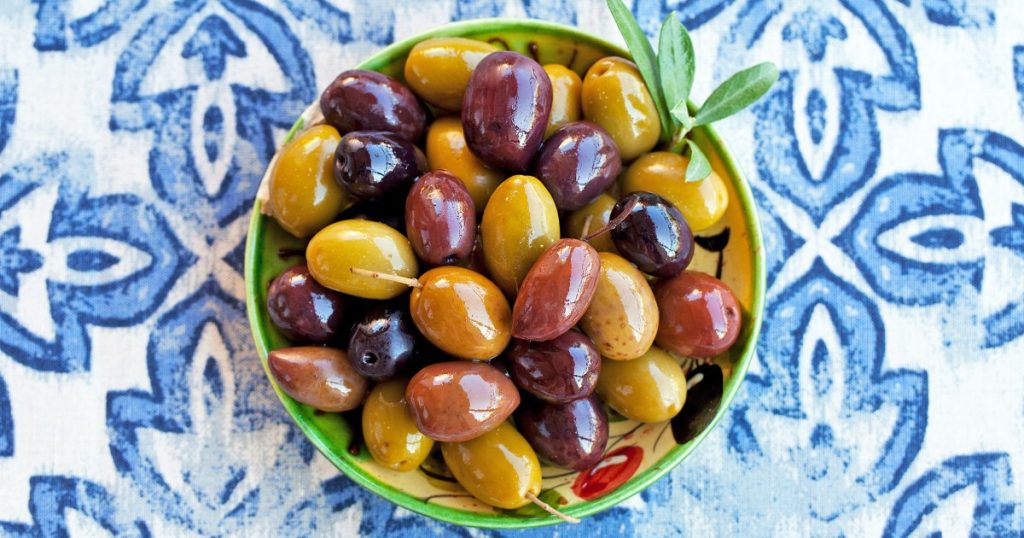Olives are a popular snack and flavorful addition to meals, but are they healthy? Olives are actually fruits native to Mediterranean regions, falling into the stone fruit family with cherries and peaches. They are extremely bitter when raw due to a compound called oleuropein and need to be cured before they can be eaten. Olives come in various varieties such as manzanilla, kalamata, or castelvetrano, with the difference between green and purple or black olives being ripeness. The serving size and nutrient content of olives can vary based on factors like size and type, but generally, 10 green olives contain 58 calories, 6 grams of fat, 1.5 grams of carbohydrates, 1.3 grams of fiber, 0.4 grams of protein, and 620 milligrams of sodium.
Nutritionally, olives are more of a fat than a carb or protein, but the fat in olives is considered healthy, good fat, according to dietitians. Olives are nutrient-dense, serving as a great source of heart-healthy monounsaturated fats, low in carbs, rich in fiber, and packed with vitamins, minerals, and antioxidants. They are naturally low in calories, have no sugar, and are a whole food. Olives may help protect heart health, lower cholesterol, reduce inflammation, manage blood sugar, and lower the risk of cancer and other chronic diseases. The healthy monounsaturated fats in olives play a role in lowering total and LDL cholesterol, while also improving the ratio of good to bad cholesterol. Olive nutrients like oleic acid, vitamin E, and quercetin combat oxidative stress, protect cells from damage, lower blood pressure, and support cardiovascular health.
Olives are extracted to produce olive oil, which is one of the healthiest cooking oils to use. Both olives and olive oil are healthy when consumed in moderation but differ in nutritional value. Olive oil contains more monounsaturated fatty acids and antioxidants than whole olives. Olive oil is lower in sodium compared to olives but lacks fiber and other nutrients found in the olive fruit. While both options are valuable for a heart-healthy diet, olives provide nutrients and sustenance, while olive oil is usually used in smaller quantities for cooking. When it comes to olive varieties, the difference in nutrition between green and purple or black olives is minimal, with each type containing slightly varying nutrients.
One downside of olives is their high sodium content, as they can have over 200 milligrams of sodium in just three olives depending on the curing process. This may not be an issue for healthy individuals who stick to the recommended serving size and daily sodium limit, but it can be a concern for those who need to restrict sodium intake, such as individuals with high blood pressure, heart failure, or kidney disease. Moderation is key when consuming olives daily, especially for those monitoring their salt intake. Olives can be eaten as part of a balanced diet, but portion control is essential due to their higher fat content and caloric density compared to other fruits and vegetables. Always consult a doctor if you have questions or concerns regarding olives and their impact on your health.













